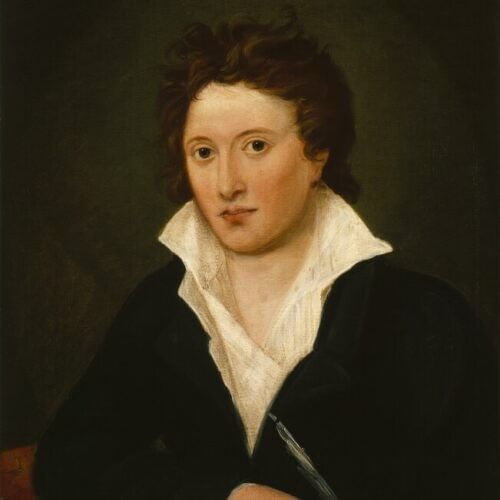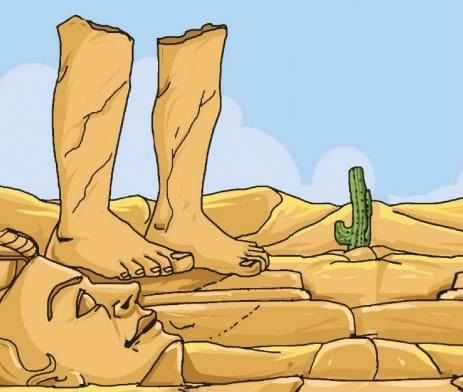Summary: Ozymandias | English Class 6 ICSE PDF Download
| Table of contents |

|
| Introduction |

|
| Key Points of the Poem |

|
| Summary |

|
| Message |

|
Introduction
"Ozymandias" is a famous poem written by Percy Bysshe Shelley, a well-known English poet. This poem tells the story of a once-powerful ruler named Ozymandias, whose broken statue now lies in a desert. Through the poem, Shelley shares a message about the temporary nature of power and glory. It is a short but thought-provoking poem that makes us think about how time affects even the greatest achievements.
 Percy Bysshe Shelley
Percy Bysshe Shelley
Key Points of the Poem
- The poem tells the story of Ozymandias, a famous ruler who was once very powerful and built many large monuments and statues to show his greatness.
- It describes a broken statue of Ozymandias found in a desert, with only its legs and a shattered face remaining, showing how time has worn it down.
- The poem teaches an important lesson about how even the mightiest rulers and their achievements can be forgotten and destroyed by the passage of time.
- It encourages young readers to think about how their own beliefs and opinions might change as they grow older and experience more in life.
Summary
Stanza 1
I met a traveller from an antique land
Who said: 'Two vast and trunkless legs of stone
Stand in the desert... Near them, on the sand,
Half sunk, a shattered visage lies, whose frown,
And wrinkled lip, and sneer of cold command,4
Tell that its sculptor well those passions read
Which yet survive, stamped on these lifeless things,
The poem starts with the speaker meeting a traveler from a very old land. This traveler shares an interesting story about seeing two huge stone legs standing alone in a desert. These legs have no upper body, which shows the statue is broken. Nearby, there is a face that is half buried in the sand, cracked and damaged. The face has a frown, wrinkled lips, and a mocking smile that suggests the ruler was strict and proud. The traveler explains that the sculptor who made the statue was very skilled and captured these strong emotions perfectly. Even though the statue is old and lifeless, these feelings can still be seen in the stone.

Stanza 2
The hand that mocked them, and the heart that fed;
And on the pedestal, these words appear:
"My name is Ozymandias, king of kings:
Look on my works, ye Mighty, and despair!"
Nothing beside remains. Round the decay
Of that colossal wreck, boundless and bare
The lone and level sands stretch far away.
In the second part, the traveler talks about the hands that created the statue and the heart that gave it life through the emotions it shows. On the base of the statue, there is an inscription with proud words: "My name is Ozymandias, king of kings: Look on my works, ye Mighty, and despair!" This means Ozymandias wanted everyone, especially other powerful people, to see his amazing achievements and feel small in comparison. However, the traveler notes that nothing else remains around the statue. The huge broken pieces lie in the desert, and all around is empty sand stretching far away. This shows that time has erased all of Ozymandias' glory, leaving only ruins behind.
Message
The poem teaches us that no matter how powerful or famous someone is, time can destroy everything they have built. It warns against being too proud and shows that nature and time are stronger than human achievements. It also makes us think about how our own ideas and beliefs can change as we grow and learn more about the world.
New Words with Meanings
- Pharaoh: A ruler of ancient Egypt, like a king.
- Visage: Another word for a person's face.
- Sneer: A facial expression that shows disrespect or mockery, like a small smile with bad intent.
- Cold command: A type of authority that is strict and lacks kindness or warmth.
- Colossal: Something extremely large, at least twice the size of a normal person.
|
38 docs|19 tests
|
FAQs on Summary: Ozymandias - English Class 6 ICSE
| 1. What is the central theme of the poem "Ozymandias"? |  |
| 2. Who is the author of the poem "Ozymandias," and when was it written? |  |
| 3. What literary devices are used in "Ozymandias"? |  |
| 4. What does the inscription on the pedestal of the statue signify in "Ozymandias"? |  |
| 5. How does "Ozymandias" reflect on the concept of legacy? |  |














